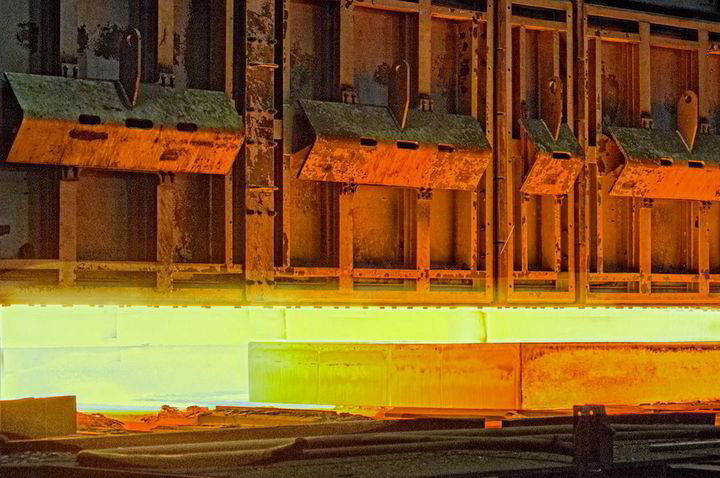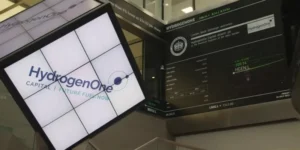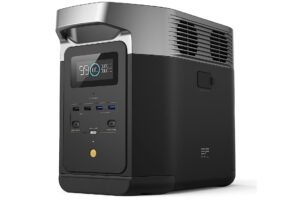German steel producer unveils tender for 50,000 tonnes of locally-made green hydrogen

A German steel giant has launched a tender for 50,000 tonnes of renewable hydrogen to use in the manufacture of direct-reduced iron (DRI) for “clean” steel production, the company announced yesterday (Tuesday).
Stahl-Holding-Saar (SHS), which owns steel producers Dillinger and Saarstahl, wants to use the green hydrogen in a new DRI plant it has planned at the Dillinger steel mill in Saarland (close to Germany’s border with France) — which recently secured a preliminary offtake deal with Danish renewables giant Orsted for H2-derived steel plates for wind turbines.
The SHS tender is closed, meaning that bidding is invite-only, and the company is targeting green hydrogen supply from local producers, specifically around the nearby proposed Mosel Saar Hydrogen Conversion (MosaHYc) pipeline project.
The MosaHYc project, under development by French gas pipeline operator GRTgaz and German gas distributor Creos Deutschland, aims to build a 100km hydrogen pipeline connecting Germany’s Saarland state and the neighbouring French region of Lorraine.
Executives at GRTgaz said in February that a final investment decision on the project is due “very soon”, however, the exact route has yet to be revealed and will be dependent on the location of its customers.
One of the most likely contenders to bid to supply green hydrogen for the steel mill is the 53MW Hydrohub Fenne project in Völklingen, Saarland, which developer Iqony aims to be the largest proton exchange membrane (PEM) electrolyser plant in Europe if it is completed on schedule in 2027.
Article continues below the advert
The project was recently included among the EU’s €6.9bn ($7.4bn) Hy2Infra Important Project of Common European Interest (IPCEI) programme, meaning that it can now be fast-tracked for subsidies.
However, that project will only produce 8,200 tonnes of hydrogen per year — not nearly enough to meet SHS’s requirements, which envisage 50,000 tonnes of green hydrogen demand by 2030, rising to 120,000 tonnes or even 150,000 tonnes in future.
“The tender process marks an important step on our path to more sustainable steel production,” said Jonathan Weber, head of transformation at SHS. “We as the steel industry are sending a clear signal and creating a secure framework for the development of the local hydrogen economy. We want to offer our customers the first CO2-reduced steel from Saarland from 2027/28.”
SHS is targeting 3.5 million tonnes of “green” steel production by 2028 as part of a drive to decarbonise 70% of its steel output by 2030, via the Dillinger DRI plant as well as two new electric arc furnaces, one at Dillinger, and another at its Völklingen steel mill, also in Saarland.
The company was granted a massive €2.6bn in subsidies by the German government in order to carry out the works.
50,000 tonnes of renewable H2 per year would be enough to make just 926,000 tonnes of green steel per year (based on a best-case estimate of 54kg H2 per tonne of DRI) if using 100% hydrogen in the reduction process — just a quarter of SHS’s target of 3.5 million tonnes in 2028.
However, Dillinger recently told Hydrogen Insight that it plans to supplement green hydrogen use in its DRI unit with 50% methane until enough green hydrogen becomes available to reach 80%, which is scheduled for 2030.
Moreover, the company plans to meet its 3.5 million tonne clean steel target in 2027 with a 50% mix of DRI (using 50:50 H2 and methane), and 50% scrap metal, which would be smelted in one of its new electric arc furnaces.
But even a 50% green H2 blend in the DRI process — for which 50,000 tonnes would yield 1.4 million tonnes of clean steel — will be dependent on supply, the company noted.
The H2 input will be increased according to availability, SHS told Hydrogen Insight, with further hydrogen tenders in the offing for delivery next decade.






